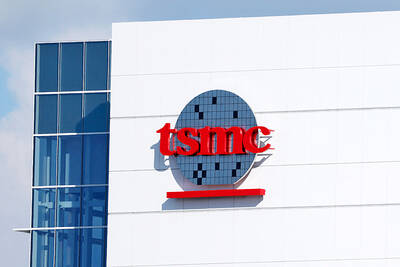Investors in the pound have waited more than six years for the Bank of England (BOE) to raise interest rates and bolster the UK currency. With money markets signaling no move next year, it looks like they might have to wait longer.
The central bank has held its key rate at a record-low 0.5 percent since March 2009 and forward contracts based on the sterling overnight index average (SONIA) are not fully pricing in a quarter-point rate increase until January 2017, data compiled by Bloomberg show.
Speculation that rates are to remain low as policymakers attempt to boost inflation is being underpinned by oil prices that dropped to an 11-year low this week, helping to push the pound to its lowest level against the US dollar since April.
That policy outlook contrasts with the US Federal Reserve, which earlier this month raised US interest rates for the first time in almost a decade.
“The Bank of England has recently created more of a divergence in policy expectations between itself and the Fed and that’s weighing down more on cable,” said Lee Hardman, a London-based currency strategist at Bank of Tokyo-Mitsubishi UFJ Ltd, referring to the pound-dollar exchange rate.
BOE officials “appear to be utilizing this drop in oil to buy them more time before raising rates. The fundamentals are quite similar to the US, but obviously a lot less decisive,” he said.
The pound rose 0.1 percent this week to US$1.4908 as of 1:02pm in London on Thursday. It dropped as low as US$1.4806 on Tuesday, the lowest since April 15. Sterling depreciated 0.7 percent to £0.7344 per euro, having touched £0.7416 on Tuesday, the weakest level since Oct. 15.
UK government bonds fell this week, sending the 10-year yield up nine basis points, or 0.09 of a percentage point, to 1.92 percent. The 2 percent gilt due in September 2025 dropped 0.8, or £8 per £1,000 face amount, to 100.70.
Still, gilts this year have outperformed German securities, the eurozone’s benchmark sovereign debt, returning 0.6 percent through Wednesday, according to Bloomberg World Bond Indexes. Germany’s bonds earned 0.4 percent, while US Treasuries gained 0.9 percent.

Real estate agent and property developer JSL Construction & Development Co (愛山林) led the average compensation rankings among companies listed on the Taiwan Stock Exchange (TWSE) last year, while contract chipmaker Taiwan Semiconductor Manufacturing Co (TSMC, 台積電) finished 14th. JSL Construction paid its employees total average compensation of NT$4.78 million (US$159,701), down 13.5 percent from a year earlier, but still ahead of the most profitable listed tech giants, including TSMC, TWSE data showed. Last year, the average compensation (which includes salary, overtime, bonuses and allowances) paid by TSMC rose 21.6 percent to reach about NT$3.33 million, lifting its ranking by 10 notches

Popular vape brands such as Geek Bar might get more expensive in the US — if you can find them at all. Shipments of vapes from China to the US ground to a near halt last month from a year ago, official data showed, hit by US President Donald Trump’s tariffs and a crackdown on unauthorized e-cigarettes in the world’s biggest market for smoking alternatives. That includes Geek Bar, a brand of flavored vapes that is not authorized to sell in the US, but which had been widely available due to porous import controls. One retailer, who asked not to be named, because

SEASONAL WEAKNESS: The combined revenue of the top 10 foundries fell 5.4%, but rush orders and China’s subsidies partially offset slowing demand Taiwan Semiconductor Manufacturing Co (TSMC, 台積電) further solidified its dominance in the global wafer foundry business in the first quarter of this year, remaining far ahead of its closest rival, Samsung Electronics Co, TrendForce Corp (集邦科技) said yesterday. TSMC posted US$25.52 billion in sales in the January-to-March period, down 5 percent from the previous quarter, but its market share rose from 67.1 percent the previous quarter to 67.6 percent, TrendForce said in a report. While smartphone-related wafer shipments declined in the first quarter due to seasonal factors, solid demand for artificial intelligence (AI) and high-performance computing (HPC) devices and urgent TV-related orders

MINERAL DIPLOMACY: The Chinese commerce ministry said it approved applications for the export of rare earths in a move that could help ease US-China trade tensions Chinese Vice Premier He Lifeng (何立峰) is today to meet a US delegation for talks in the UK, Beijing announced on Saturday amid a fragile truce in the trade dispute between the two powers. He is to visit the UK from yesterday to Friday at the invitation of the British government, the Chinese Ministry of Foreign Affairs said in a statement. He and US representatives are to cochair the first meeting of the US-China economic and trade consultation mechanism, it said. US President Donald Trump on Friday announced that a new round of trade talks with China would start in London beginning today,